
Arabic is a Semitic language spoken primarily across the Arab world. Having emerged in the 1st millennium BC, it is named after the Arab people; the term "Arab" was initially used to describe those living in the Arabian Peninsula, as perceived by geographers from ancient Greece.
British English is the set of varieties of the English language native to Great Britain. More narrowly, it can refer specifically to the English language in England, or, more broadly, to the collective dialects of English throughout the British Isles taken as a single umbrella variety, for instance additionally incorporating Scottish English, Welsh English, and Northern Irish English. Tom McArthur in the Oxford Guide to World English acknowledges that British English shares "all the ambiguities and tensions [with] the word 'British' and as a result can be used and interpreted in two ways, more broadly or more narrowly, within a range of blurring and ambiguity".
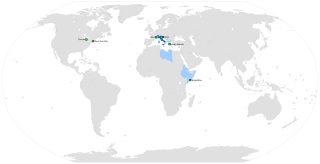
Italian is a Romance language of the Indo-European language family that evolved from the Vulgar Latin of the Roman Empire. Together with Sardinian, Italian is the least divergent language from Latin. Spoken by about 85 million people (2022), Italian is an official language in Italy, San Marino, Switzerland, and is the primary language of Vatican City. It has official minority status in Croatia and in some areas of Slovenian Istria.
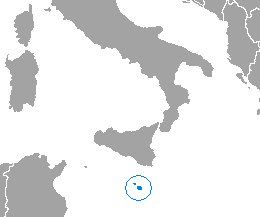
Maltese is a Semitic language derived from late medieval Sicilian Arabic with Romance superstrata spoken by the Maltese people. It is the national language of Malta and the only official Semitic and Afro-Asiatic language of the European Union. Maltese is a Latinized variety of spoken historical Arabic through its descent from Siculo-Arabic, which developed as a Maghrebi Arabic dialect in the Emirate of Sicily between 831 and 1091. As a result of the Norman invasion of Malta and the subsequent re-Christianization of the islands, Maltese evolved independently of Classical Arabic in a gradual process of latinization. It is therefore exceptional as a variety of historical Arabic that has no diglossic relationship with Classical or Modern Standard Arabic. Maltese is thus classified separately from the 30 varieties constituting the modern Arabic macrolanguage. Maltese is also distinguished from Arabic and other Semitic languages since its morphology has been deeply influenced by Romance languages, namely Italian and Sicilian.

Polish is a West Slavic language of the Lechitic group written in the Latin script. It is spoken primarily in Poland and serves as the native language of the Poles. In addition to being the official language of Poland, it is also used by the Polish diaspora. There are over 50 million Polish speakers around the world. It ranks as the sixth most-spoken among languages of the European Union. Polish is subdivided into regional dialects and maintains strict T–V distinction pronouns, honorifics, and various forms of formalities when addressing individuals.

Swedish is a North Germanic language spoken predominantly in Sweden and in parts of Finland. It has at least 10 million native speakers, the fourth most spoken Germanic language and the first among any other of its type in the Nordic countries overall.
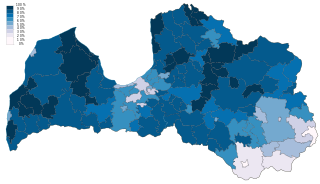
The Latvian language, also known as Lettish, is an East Baltic language belonging to the Baltic branch of the Indo-European language family, spoken in the Baltic region. It is the language of Latvians and the official language of Latvia as well as one of the official languages of the European Union. There are about 1.2 million native Latvian speakers in Latvia and 100,000 abroad. Altogether, 2 million, or 80% of the population of Latvia, spoke Latvian in the 2000s, before the total number of inhabitants of Latvia slipped to less than 1.9 million in 2022. Of those, around 1.16 million or 62% of Latvia's population used it as their primary language at home, though excluding the Latgale region it is spoken as a native language in villages and towns by over 90% of the population.
Colloquial or spoken Finnish is the unstandardized spoken variety of the Finnish language, in contrast with the standardized form of the language. It is used primarily in personal communication and varies somewhat between the different dialects.
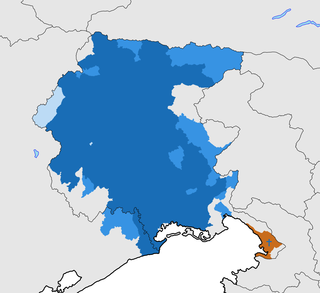
Friulian or Friulan is a Romance language belonging to the Rhaeto-Romance family, spoken in the Friuli region of northeastern Italy. Friulian has around 600,000 speakers, the vast majority of whom also speak Italian. It is sometimes called Eastern Ladin since it shares the same roots as Ladin, but over the centuries, it has diverged under the influence of surrounding languages, including German, Italian, Venetian, and Slovene. Documents in Friulian are attested from the 11th century and poetry and literature date as far back as 1300. By the 20th century, there was a revival of interest in the language.

Tajik, also called Tajiki Persian or Tajiki, is the variety of Persian spoken in Tajikistan and Uzbekistan by Tajiks. It is closely related to neighbouring Dari of Afghanistan with which it forms a continuum of mutually intelligible varieties of the Persian language. Several scholars consider Tajik as a dialectal variety of Persian rather than a language on its own. The popularity of this conception of Tajik as a variety of Persian was such that, during the period in which Tajik intellectuals were trying to establish Tajik as a language separate from Persian, prominent intellectual Sadriddin Ayni counterargued that Tajik was not a "bastardised dialect" of Persian. The issue of whether Tajik and Persian are to be considered two dialects of a single language or two discrete languages has political sides to it.

Sicilian is a Romance language that is spoken on the island of Sicily and its satellite islands. It belongs to the broader Extreme Southern Italian language group.
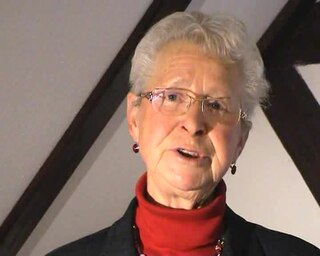
Hunsrückisch is a German dialect spoken in the Hunsrück region of Germany (Rhineland-Palatinate). This mountainous region of Germany has long been an exporter of emigrants to Brazil, United States, Canada, Australia and other parts of the world.

Neapolitan is a Romance language of the Italo-Romance group spoken in Naples and most of continental Southern Italy. It is named after the Kingdom of Naples, which once covered most of the area, since the city of Naples was its capital. On 14 October 2008, a law by the Region of Campania stated that Neapolitan was to be protected.

The Ghomara language is a Northern Berber language spoken in Morocco. It is the mother tongue of the Ghomara Berbers, who total around 10,000 people. Ghomara Berber is spoken on the western edge of the Rif, among the Beni Bu Zra and Beni Mansur tribes of the Ghomara confederacy. Despite being listed as endangered, it is still being passed on to children in these areas.

Tunisian Arabic, or simply Tunisian,, is variety of Arabic spoken in Tunisia. It is known among its 12 million speakers as Tūnsi, "Tunisian" or Derja to distinguish it from Modern Standard Arabic, the official language of Tunisia. Tunisian Arabic is mostly similar to eastern Algerian Arabic and western Libyan Arabic.

Algerian Arabic, natively known as Dziria, Darja or Derja, is a dialectal variety of Arabic spoken in Algeria. It belongs to the Maghrebi Arabic dialect continuum and is mostly intelligible with the Tunisian and Moroccan dialects.

The Maltese people are an ethnic group native to Malta who speak Maltese, a Semitic language and share a common culture and Maltese history. Malta, an island country in the Mediterranean Sea, is an archipelago that also includes an island of the same name together with the islands of Gozo and Comino ; people of Gozo, Gozitans are considered a subgroup of the Maltese.

Fiji Hindi is an Indo-Aryan language spoken by Indo-Fijians. It is an Eastern Hindi and Bihari language, considered to be a koiné language based on Awadhi that has also been subject to considerable influence by Bhojpuri, other Eastern Hindi and Bihari dialects, and Standard Hindi-Urdu. It has also borrowed some vocabulary from English, Fijian, Tamil, Telugu, Bengali, Punjabi, Gujarati, and Malayalam. Many words unique to Fiji Hindi have been created to cater for the new environment that Indo-Fijians now live in. First-generation Indians in Fiji, who used the language as a lingua franca in Fiji, referred to it as Fiji Baat, "Fiji talk". It is closely related to Caribbean Hindustani and the Bhojpuri-Hindustani spoken in Mauritius and South Africa. It is largely mutually intellegible with the languages of Awadhi and Bhojpuri, as well as with the Bihari languages of Bihar, Uttar Pradesh, Jharkhand, Madhesh, Koshi and Lumbini, and the dialects of Eastern Hindi of Uttar Pradesh, Madhya Pradesh, Chhattisgarh and Lumbini, but differs in phonetics and vocabulary with Modern Standard Hindi and Urdu.

Åland dialects are dialects of Swedish spoken in Åland, an autonomous province of Finland. The Åland dialects have similarities to both Finland Swedish and the historical dialects of Uppland, but are generally considered to be part of Eastern Swedish.
Konkani is a southern Indo-Aryan language belonging to the Indo-European family of languages spoken in the Konkan coastal region of India. It has approximately 3.6 million speakers.

















